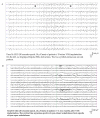Role of Vagus Nerve Stimulation in Refractory and Super Refractory Status Epilepticus: A Pediatric Case Series
- PMID: 38002548
- PMCID: PMC10669853
- DOI: 10.3390/brainsci13111589
Role of Vagus Nerve Stimulation in Refractory and Super Refractory Status Epilepticus: A Pediatric Case Series
Abstract
Background: Status epilepticus is a life-threatening condition that is defined as refractory (RSE) when the seizure activity continues despite treatment with benzodiazepine and a second appropriate treatment. Super refractory status epilepticus (SRSE) is an RSE that persists or recurs for ≥24 h. Few papers have reported the outcomes of pediatric patients affected by RSE and SRSE and treated with neuromodulation therapies. Vagus nerve stimulation (VNS) is an approved treatment for drug-resistant epilepsy. We present our findings of pediatric patients treated with VNS for RSE/SRSE.
Methods: We present a case series of seven consecutive pediatric patients treated with VNS for SRSE since 2012 by a single surgeon in Monza and Padua. A rapid titration was started soon after implantation. We considered electroclinical data before and after VNS implantation and at the last follow-up.
Results: We achieved the resolution of SRSE in five out of seven patients in a mean time of two weeks. At the last follow-up, these patients had a significant reduction of seizure burden without any relapse of SE.
Discussion and conclusions: Based on our limited findings, we discuss the potential role of VNS therapy in similar but distinct clinical contexts. For patients with drug-resistant epilepsy and RSE/SRSE, prompt VNS consideration is suggested, offering rapid responses and potentially reducing pharmacological load. Meanwhile, in NORSE/FIRES, we suggest early neuromodulation during the acute phase if standard treatments prove ineffective or not tolerated. This approach may leverage VNS's potential anti-inflammatory effects and neuromodulation, enhancing patient-specific treatments. Expanding case studies and prolonged follow-ups are recommended to strengthen these clinical insights.
Keywords: FIRES; NORSE; neuromodulation; pediatric epilepsy; super refractory status epilepticus; vagus nerve stimulation.
Conflict of interest statement
The authors declare no conflict of interest.
Figures


Similar articles
-
Vagus nerve stimulation in refractory and super-refractory status epilepticus - A systematic review.Brain Stimul. 2019 Sep-Oct;12(5):1101-1110. doi: 10.1016/j.brs.2019.05.011. Epub 2019 May 14. Brain Stimul. 2019. PMID: 31126871
-
Refractory Status Epilepticus in Genetic Epilepsy-Is Vagus Nerve Stimulation an Option?Front Neurol. 2020 Jun 12;11:443. doi: 10.3389/fneur.2020.00443. eCollection 2020. Front Neurol. 2020. PMID: 32595584 Free PMC article.
-
Diagnostics and Non-pharmacological interventions for refractory and super refractory status epilepticus in Germany: A comprehensive analysis of 4 years of billing data.Seizure. 2025 Jul;129:108-114. doi: 10.1016/j.seizure.2025.04.003. Epub 2025 Apr 8. Seizure. 2025. PMID: 40273538
-
Vagus nerve stimulation for super-refractory status epilepticus in febrile infection-related epilepsy syndrome: a pediatric case report and literature review.Childs Nerv Syst. 2022 Jul;38(7):1401-1404. doi: 10.1007/s00381-021-05410-6. Epub 2021 Nov 11. Childs Nerv Syst. 2022. PMID: 34762158 Review.
-
Ketogenic diet for super-refractory status epilepticus (SRSE) with NORSE and FIRES: Single tertiary center experience and literature data.Front Neurol. 2023 Apr 13;14:1134827. doi: 10.3389/fneur.2023.1134827. eCollection 2023. Front Neurol. 2023. PMID: 37122314 Free PMC article.
Cited by
-
Immediate Postoperative Activation of Vagus Nerve Stimulation (VNS) for Super-refractory Status Epilepticus: A Case Report.Cureus. 2024 Dec 28;16(12):e76509. doi: 10.7759/cureus.76509. eCollection 2024 Dec. Cureus. 2024. PMID: 39877767 Free PMC article.
-
Outcome of emergency neurosurgery in patients with refractory and super-refractory status epilepticus: a systematic review and individual participant data meta-analysis.Front Neurol. 2024 May 28;15:1403266. doi: 10.3389/fneur.2024.1403266. eCollection 2024. Front Neurol. 2024. PMID: 38863514 Free PMC article.
-
Vagus nerve stimulation and fast parameter programming protocol in children with febrile infection-related epilepsy syndrome in ICU.Neurotherapeutics. 2025 Apr;22(3):e00551. doi: 10.1016/j.neurot.2025.e00551. Epub 2025 Feb 25. Neurotherapeutics. 2025. PMID: 40000337 Free PMC article.
References
-
- Vossler D.G., Bainbridge J.L., Boggs J.G., Novotny E.J., Loddenkemper T., Faught E., Amengual-Gual M., Fischer S.N., Gloss D.S., Olson D.M., et al. Treatment of Refractory Convulsive Status Epilepticus: A Comprehensive Review by the American Epilepsy Society Treatments Committee. Epilepsy Curr. 2020;20:245–264. doi: 10.1177/1535759720928269. - DOI - PMC - PubMed
-
- Kravljanac R., Djuric M., Jankovic B., Pekmezovic T. Etiology, clinical course and response to the treatment of status epilepticus in children: A 16-year single- center experience based on 602 episodes of status epilepticus. Eur. J. Paediatr. Neurol. 2015;19:584–590. doi: 10.1016/j.ejpn.2015.05.007. - DOI - PubMed
LinkOut - more resources
Full Text Sources

